Georg Böcherer
Soft-Demapping for Short Reach Optical Communication: A Comparison of Deep Neural Networks and Volterra Series
Jan 10, 2025Abstract:In optical fiber communication, optical and electrical components introduce nonlinearities, which require effective compensation to attain highest data rates. In particular, in short reach communication, components are the dominant source of nonlinearities. Volterra series are a popular countermeasure for receiver-side equalization of nonlinear component impairments and their memory effects. However, Volterra equalizer architectures are generally very complex. This article investigates soft deep neural network (DNN) architectures as an alternative for nonlinear equalization and soft-decision demapping. On coherent 92 GBd dual polarization 64QAM back-to-back measurements performance and complexity is experimentally evaluated. The proposed bit-wise soft DNN equalizer (SDNNE) is compared to a 5th order Volterra equalizer at a 15 % overhead forward error correction (FEC) limit. At equal performance, the computational complexity is reduced by 65 %. At equal complexity, the performance is improved by 0.35 dB gain in optical signal-to-noise-ratio (OSNR).
* 11 pages, 14 figures, journal
Neural Network Equalizers and Successive Interference Cancellation for Bandlimited Channels with a Nonlinearity
Jan 17, 2024Abstract:Neural networks (NNs) inspired by the forward-backward algorithm (FBA) are used as equalizers for bandlimited channels with a memoryless nonlinearity. The NN-equalizers are combined with successive interference cancellation (SIC) to approach the information rates of joint detection and decoding (JDD) with considerably less complexity than JDD and other existing equalizers. Simulations for short-haul optical fiber links with square-law detection illustrate the gains of NNs as compared to the complexity-limited FBA and Gibbs sampling.
Spiking Neural Network Nonlinear Demapping on Neuromorphic Hardware for IM/DD Optical Communication
Feb 28, 2023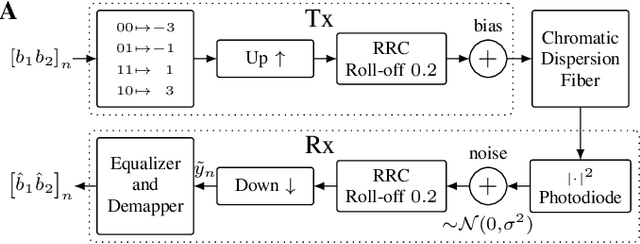
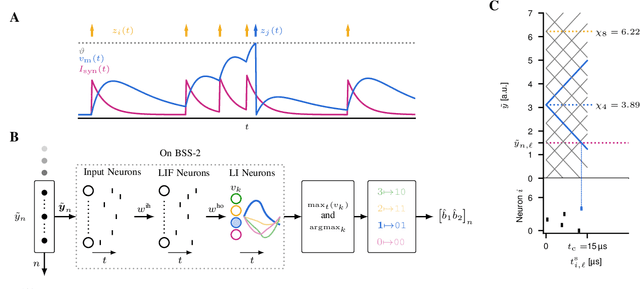
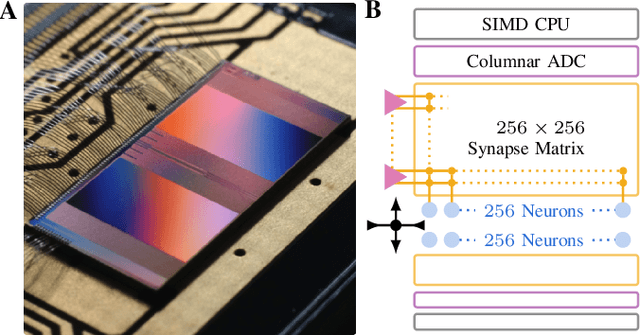
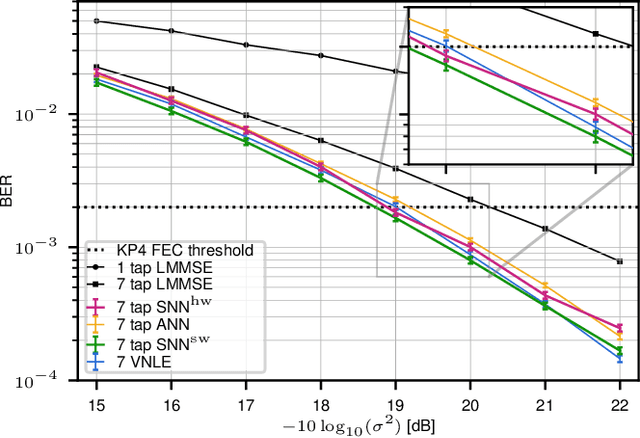
Abstract:Neuromorphic computing implementing spiking neural networks (SNN) is a promising technology for reducing the footprint of optical transceivers, as required by the fast-paced growth of data center traffic. In this work, an SNN nonlinear demapper is designed and evaluated on a simulated intensity-modulation direct-detection link with chromatic dispersion. The SNN demapper is implemented in software and on the analog neuromorphic hardware system BrainScaleS-2 (BSS-2). For comparison, linear equalization (LE), Volterra nonlinear equalization (VNLE), and nonlinear demapping by an artificial neural network (ANN) implemented in software are considered. At a pre-forward error correction bit error rate of 2e-3, the software SNN outperforms LE by 1.5 dB, VNLE by 0.3 dB and the ANN by 0.5 dB. The hardware penalty of the SNN on BSS-2 is only 0.2 dB, i.e., also on hardware, the SNN performs better than all software implementations of the reference approaches. Hence, this work demonstrates that SNN demappers implemented on electrical analog hardware can realize powerful and accurate signal processing fulfilling the strict requirements of optical communications.
Experimental Comparison of PAM-8 Probabilistic Shaping with Different Gaussian Orders at 200 Gb/s Net Rate in IM/DD System with O-Band TOSA
Jun 14, 2022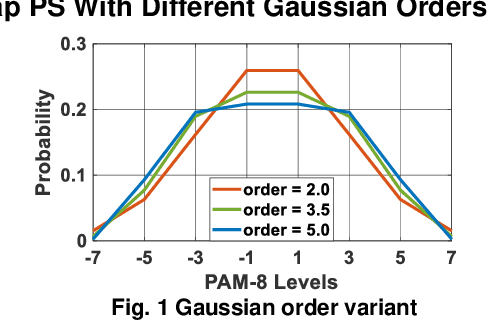
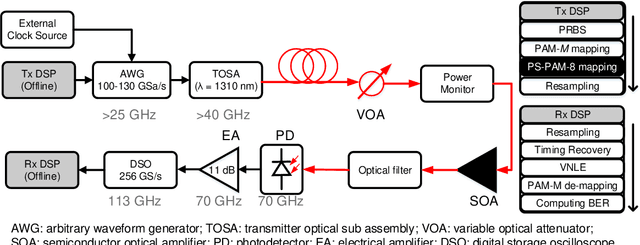
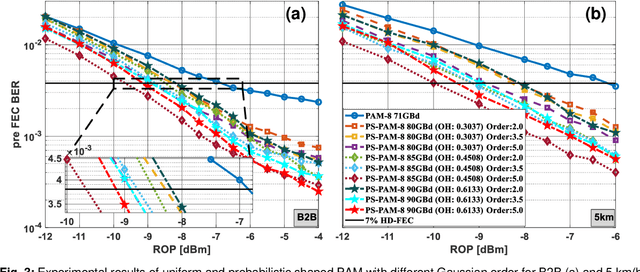
Abstract:For 200Gb/s net rates, cap probabilistic shaped PAM-8 with different Gaussian orders are experimentally compared against uniform PAM-8. In back-to-back and 5km measurements, cap-shaped 85-GBd PAM-8 with Gaussian order of 5 outperforms 71-GBd uniform PAM-8 by up to 2.90dB and 3.80dB in receiver sensitivity, respectively.
Nonlinear Equalization for Optical Communications Based on Entropy-Regularized Mean Square Error
Jun 02, 2022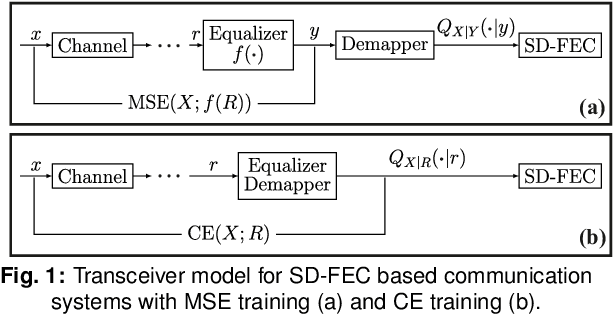
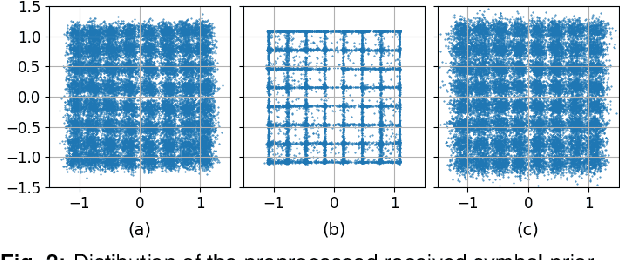
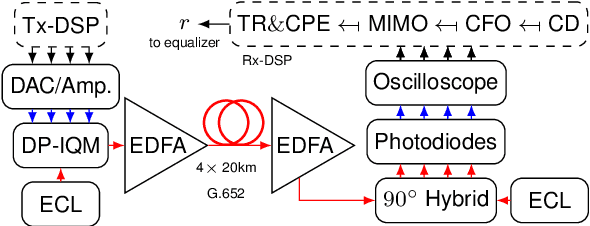
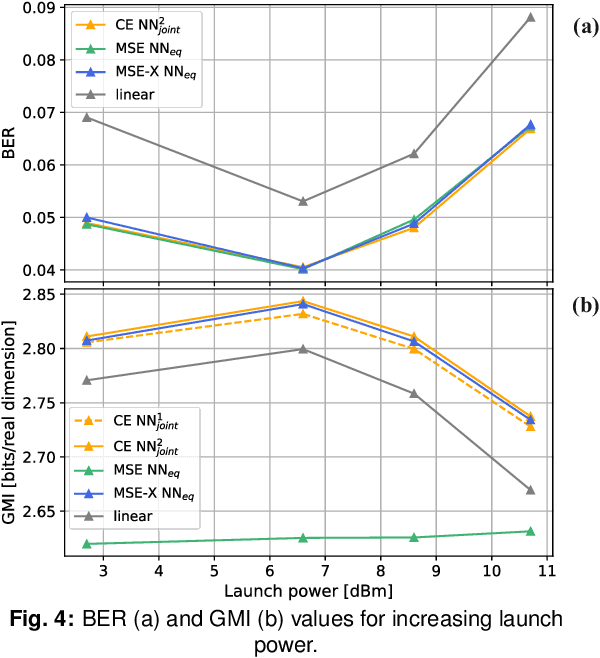
Abstract:An entropy-regularized mean square error (MSE-X) cost function is proposed for nonlinear equalization of short-reach optical channels. For a coherent optical transmission experiment, MSE-X achieves the same bit error rate as the standard MSE cost function and a significantly higher achievable information rate.
Spiking Neural Network Equalization on Neuromorphic Hardware for IM/DD Optical Communication
Jun 01, 2022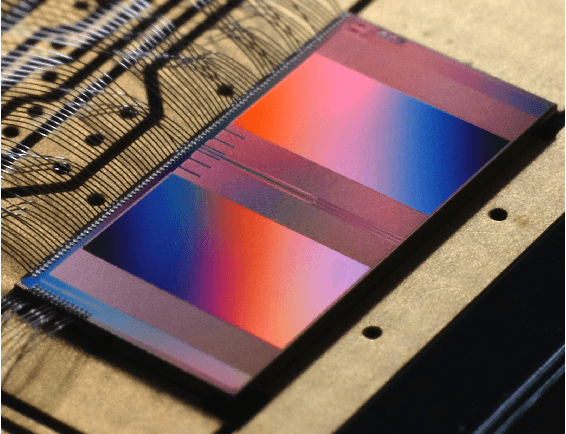
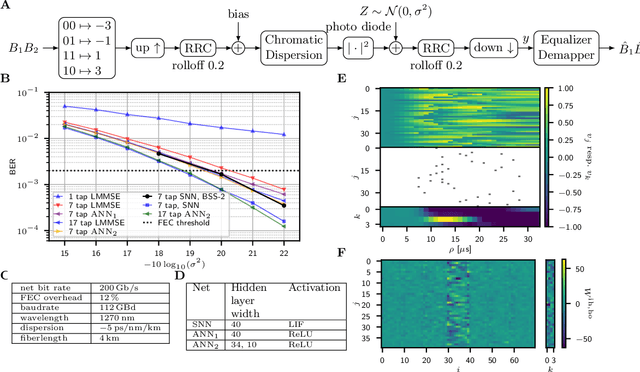
Abstract:A spiking neural network (SNN) non-linear equalizer model is implemented on the mixed-signal neuromorphic hardware system BrainScaleS-2 and evaluated for an IM/DD link. The BER 2e-3 is achieved with a hardware penalty less than 1 dB, outperforming numeric linear equalization.
Spiking Neural Network Equalization for IM/DD Optical Communication
May 09, 2022
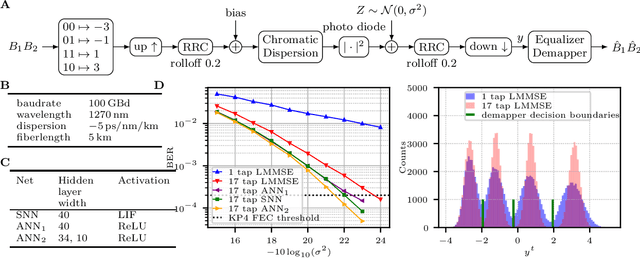
Abstract:A spiking neural network (SNN) equalizer model suitable for electronic neuromorphic hardware is designed for an IM/DD link. The SNN achieves the same bit-error-rate as an artificial neural network, outperforming linear equalization.
 Add to Chrome
Add to Chrome Add to Firefox
Add to Firefox Add to Edge
Add to Edge